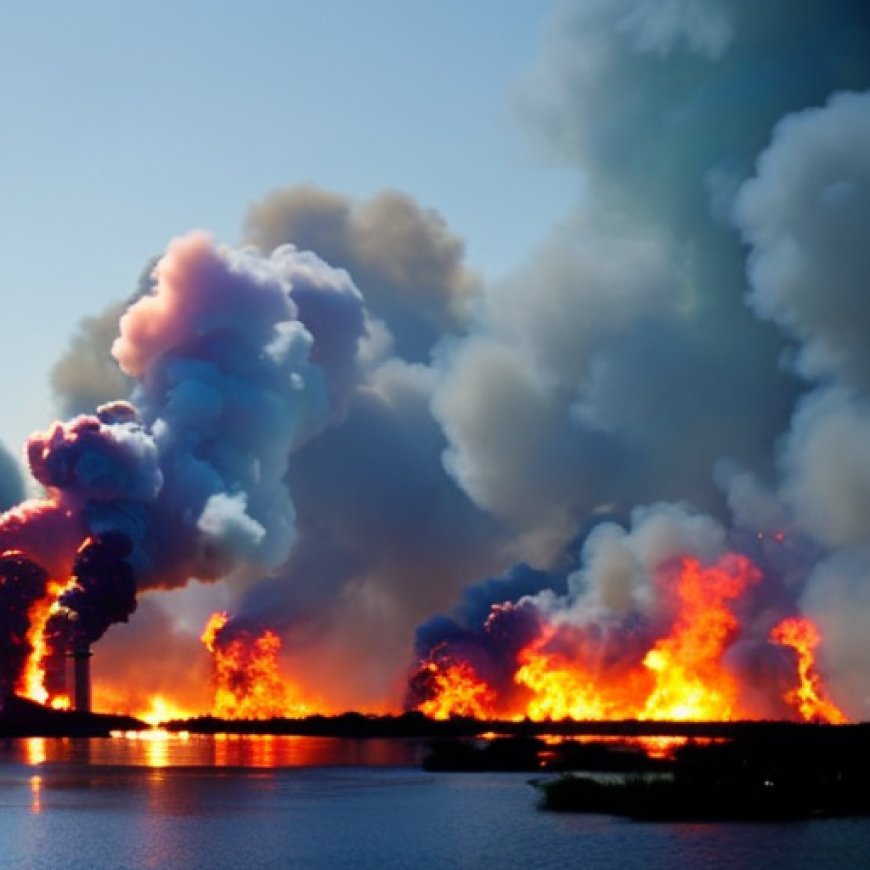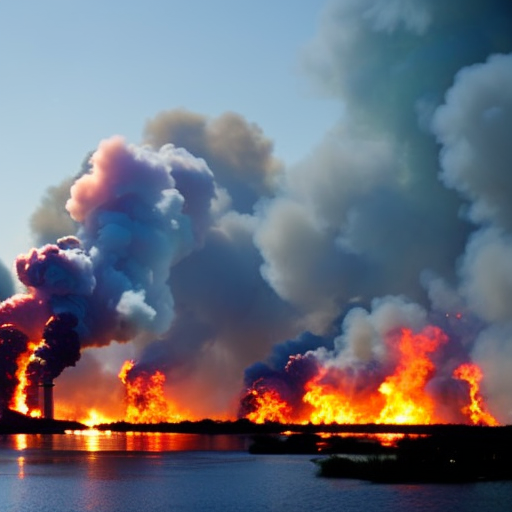Rutgers Leads Study of Wildfire Air Pollution in New Jersey
Rutgers Leads Study of Wildfire Air Pollution in New Jersey Newswise


Examining the Impact of Canadian Wildfires on Air Quality in New Jersey and New York
Rutgers scientists from the Nanoscience and Advanced Materials Center (NAMC) at the Environmental and Occupational Health Sciences Institute (EOHSI) and the Rutgers School of Public Health have conducted a measurement campaign to assess the physical and chemical attributes, as well as the potential toxicological health effects, of the Canadian wildfires on air quality in New Jersey and the New York metropolitan area.
Characterizing Wildfire Air Pollution
The NAMC utilized state-of-the-art instrumentation to characterize the physicochemical and toxicological properties of wildfire air pollution. The measurement campaign aimed to provide a comprehensive understanding of the impact of the wildfires on air quality.
Comparison to Second-Hand Smoke
The findings of the study revealed that the air quality in New Jersey and New York during the wildfires could be compared to the levels of second-hand smoke in bars before smoking bans were implemented.
Importance of Assessing Climate-Driven Events on Health
Philip Demokritou, the Henry Rutgers Chair and Professor in Nanoscience and Environmental Engineering at the Rutgers School of Public Health, emphasized the importance of assessing the impact of climate-driven events on health. He stated that an increase in the frequency and intensity of wildfires in the northeast is expected, and understanding their effects on health will help society prepare and adapt. Demokritou also highlighted the collaborative research projects between Rutgers, Harvard Medical School, and the University of South Carolina.
Research Team and Methodology
The research team, led by Demokritou, includes Georgios Kelesidis, assistant professor at the Rutgers School of Public Health and NAMC Deputy Director, and Memo Cedeño Laurent, assistant professor at the Rutgers School of Public Health and director of the Rutgers Climate Adaptive and Restorative Environments (CARE) Lab. The team collected size-fractionated particulate matter samples during the wildfire event for physicochemical and morphological characterization. Real-time measurements were also taken to monitor the fluctuating levels of air pollutants.
Health Risks Associated with Wildfire Incidents
The study found that during the peak of the incident on June 7, the average concentration of fine particulate matter (PM2.5) was 330 micrograms per cubic meter (mg/m³), exceeding the National Ambient Air Quality Standards limit of 35 mg/m³. Cedeño Laurent emphasized the potential health risks associated with wildfire incidents, particularly for vulnerable populations such as the elderly and those with pre-existing respiratory conditions.
Contributing to Scientific Understanding
The collected samples are currently being analyzed to better understand their physical and chemical composition. The researchers aim to conduct toxicological studies that contribute to the broader scientific understanding of the impacts of wildfires on human health. Several projects assessing the toxicological properties of the particulate matter collected during the incident have been initiated, and their data will shed light on potential risks of disease development.
Wildfire Smoke and Climate Change
In addition to health effects, wildfire smoke can exacerbate climate change. Kelesidis is studying how particulate matter from wildfires increases light absorption and scattering in the atmosphere, leading to further temperature variations. The effect of particulate matter from wildfires is being compared to other greenhouse gases, such as carbon dioxide and methane.
Conclusion
The measurement campaign conducted by Rutgers scientists has provided valuable insights into the impact of Canadian wildfires on air quality in New Jersey and New York. The findings highlight the need to address the health risks associated with wildfire incidents and the importance of understanding their effects on climate change. The research team plans to publish their full findings in peer-reviewed scientific papers in the coming months.
SDGs, Targets, and Indicators
-
SDG 3: Good Health and Well-being
- Target 3.9: By 2030, substantially reduce the number of deaths and illnesses from hazardous chemicals and air, water, and soil pollution and contamination.
- Indicator: Concentration of fine particulate matter (PM2.5) in the air.
-
SDG 13: Climate Action
- Target 13.1: Strengthen resilience and adaptive capacity to climate-related hazards and natural disasters in all countries.
- Indicator: Impact of wildfires on air quality and health.
Analysis
1. Which SDGs are addressed or connected to the issues highlighted in the article?
The issues highlighted in the article are connected to SDG 3: Good Health and Well-being and SDG 13: Climate Action.
2. What specific targets under those SDGs can be identified based on the article’s content?
Based on the article’s content, the specific targets identified are:
- Target 3.9: By 2030, substantially reduce the number of deaths and illnesses from hazardous chemicals and air, water, and soil pollution and contamination.
- Target 13.1: Strengthen resilience and adaptive capacity to climate-related hazards and natural disasters in all countries.
3. Are there any indicators mentioned or implied in the article that can be used to measure progress towards the identified targets?
Yes, the article mentions indicators that can be used to measure progress towards the identified targets:
- Concentration of fine particulate matter (PM2.5) in the air: This indicator relates to Target 3.9 and measures the level of air pollution and its impact on health.
- Impact of wildfires on air quality and health: This indicator relates to Target 13.1 and measures the extent to which wildfires affect air quality and human health.
Table: SDGs, Targets, and Indicators
| SDGs | Targets | Indicators |
|---|---|---|
| SDG 3: Good Health and Well-being | Target 3.9: By 2030, substantially reduce the number of deaths and illnesses from hazardous chemicals and air, water, and soil pollution and contamination. | Concentration of fine particulate matter (PM2.5) in the air. |
| SDG 13: Climate Action | Target 13.1: Strengthen resilience and adaptive capacity to climate-related hazards and natural disasters in all countries. | Impact of wildfires on air quality and health. |
Behold! This splendid article springs forth from the wellspring of knowledge, shaped by a wondrous proprietary AI technology that delved into a vast ocean of data, illuminating the path towards the Sustainable Development Goals. Remember that all rights are reserved by SDG Investors LLC, empowering us to champion progress together.
Source: newswise.com

Join us, as fellow seekers of change, on a transformative journey at https://sdgtalks.ai/welcome, where you can become a member and actively contribute to shaping a brighter future.







